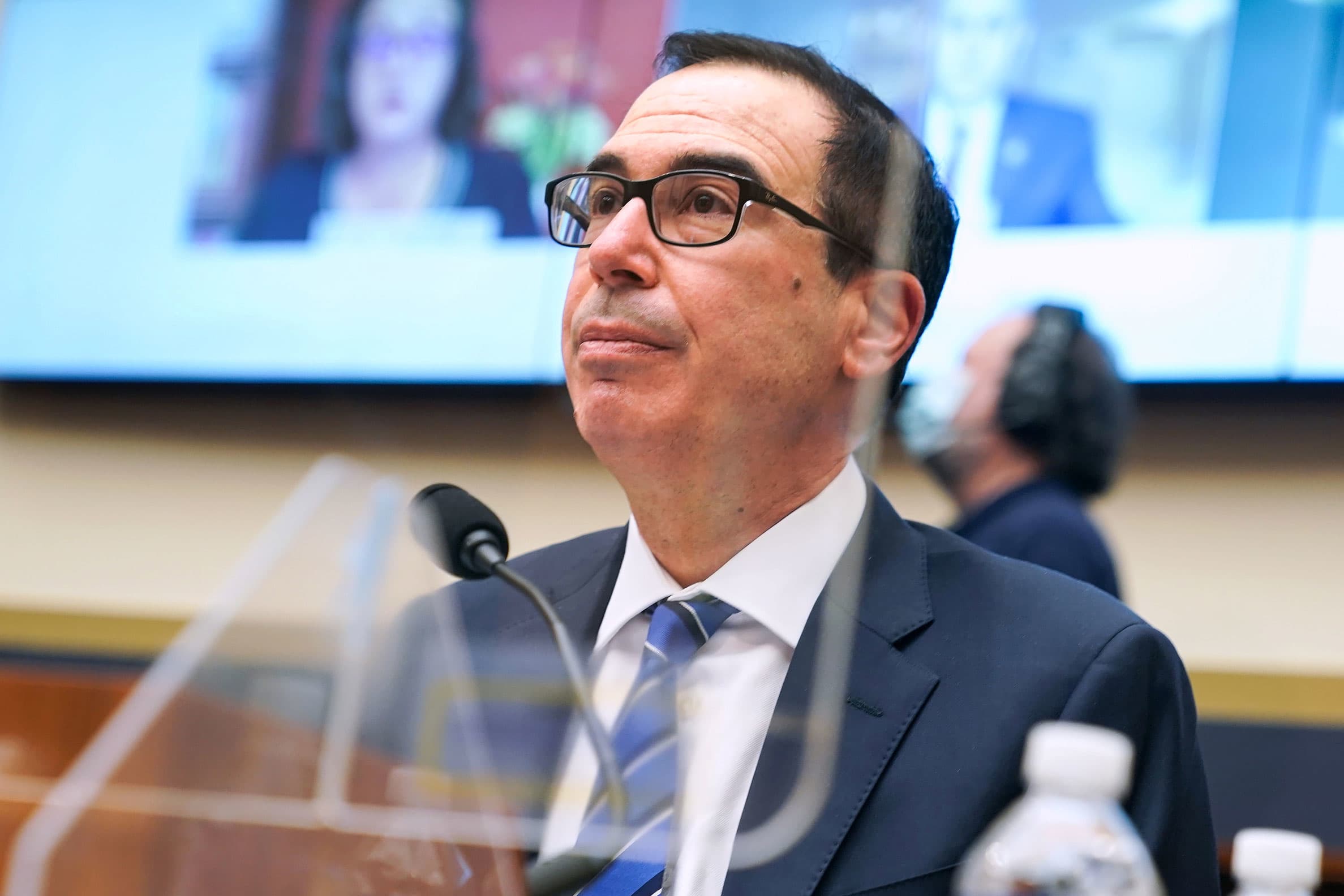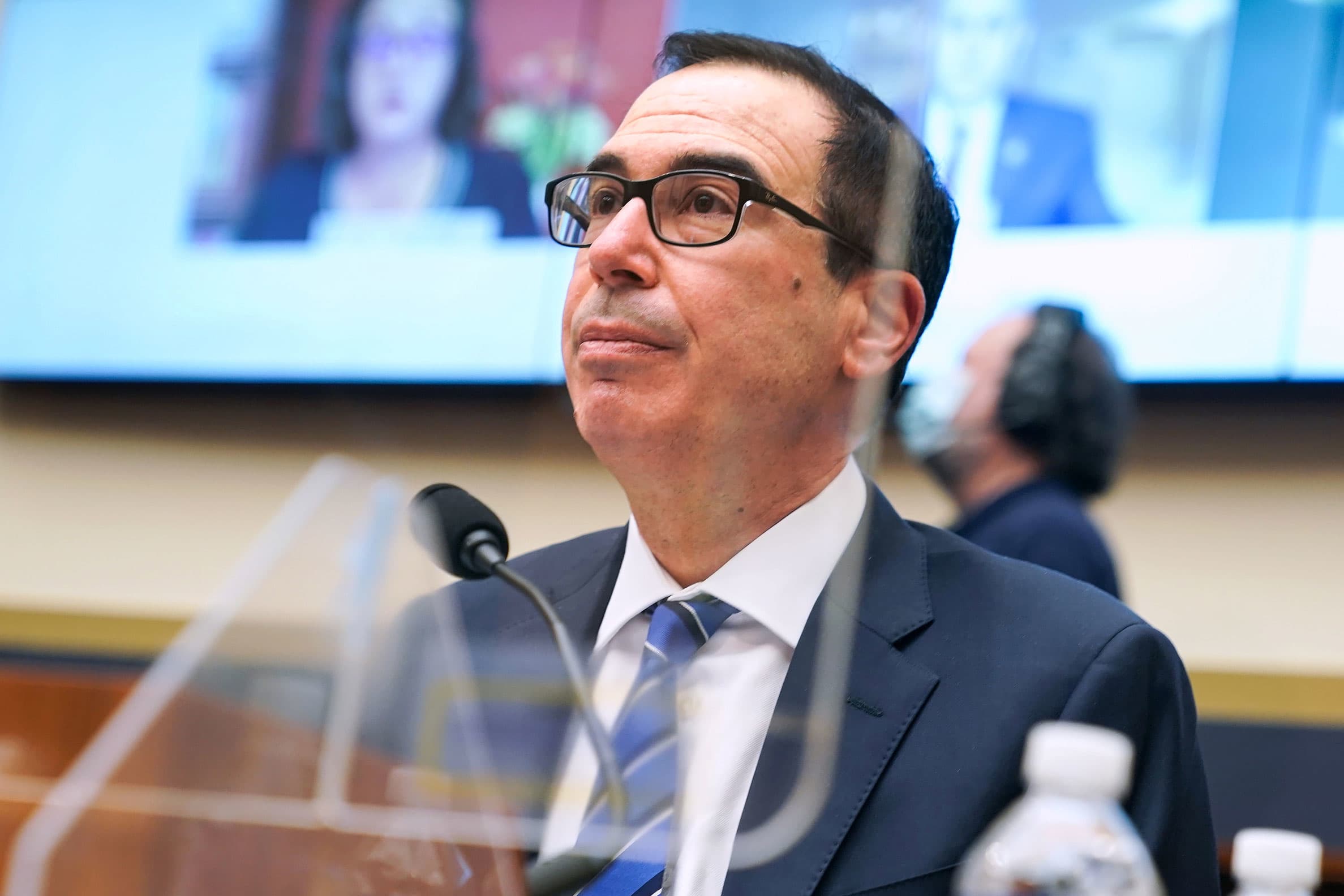
Treasury Secretary Steven Mnuchin listens to a question during a House Financial Services Committee hearing on “Oversight of the Treasury Department’s and Federal Reserve’s Pandemic Response” in the Rayburn House Office Building in Washington, December 2, 2020.
Greg Nash | Pool | Reuters
Treasury Secretary Steven Mnuchin’s decision not to extend funding for the Federal Reserve’s Main Street Lending Facility after Dec. 31 already looks to be cutting into lending, according to bankers involved with the program.
CNBC has learned that some would-be borrowers have been told that there isn’t enough time to close their loans, leaving them short of vital funds amid a resurgent pandemic.
One borrower, who asked not to be named because he did not want his customers or competitors to know his company needed a government loan, said his banker told him his application could not be processed because time had run out.
“It’s a huge impact on our ability to remain liquid and finance our business,” the borrower said. “It was a needed lifeline for a professional service firm like ours.”
The only option now are loans with double-digit interest rates, if the borrower can find a lender.
Mnuchin announced on Nov. 19 that he will not extend the deadline for a series of emergency Fed programs that were funded by the CARES Act, including the Main Street facility. He said he believed Congress intended for the funds not to be used after Dec. 31. The Fed had wanted the programs to remain open.
As a result of Mnuchin’s decision, the Fed announced in late November it would not accept new applications after Dec. 14. But bankers say it takes about a month to underwrite the loans, and from several days to a couple of weeks to get Fed approval. So Mnuchin’s decision effectively ended the program right there and then for some banks and borrowers.
A senior Treasury official replied in a statement on Monday to CNBC: “There are many banks, including big banks, that are continuing to lend and to submit applications through December 14th, and they expect that their loans will be completely funded by the time the program ends on December 31.”
Joel Werkema, a spokesperson for the Boston Fed, which runs the Main Street program, responded: “At the Fed, we will do absolutely everything we can to address volume within the operational deadlines necessary to meet the end-of-year-close requirement.”
The decision to end the program came just three weeks after The Fed and the Treasury had dramatically opened up the program to more businesses, allowing companies that had previously received a loan from the Payroll Protection Program to apply and lowering the minimum loan size to $100,000. Bankers say interest had been picking up in the troubled program.
“We’ve been averaging about four or five calls a day from good companies, but we’ve had to turn them away,” said Dan Yates, CEO of Endeavor Bank in Carlsbad, California, which had completed 20 Main Street loans. “The program for them is really a life preserver to get to them to the other side of the economic shutdown.”
“Interest has been off the charts. We were not able to handle it,” said John Steinmetz, chief executive officer of the the privately owned Vista Bank in Dallas. It had approved 42 Main Street loans worth $463 million as of last week. But of the 100 loans in its pipeline, Steinmetz believes he’ll have time to fund just 30.
Troubled start
The Main Street Facility — an attempt to lend money to midsize businesses not covered by other programs — was troubled from the start. The Fed had never been involved in making mass nonstandardized loans to individual businesses. Its terms were criticized from the outset for being too tough on borrowers and lenders. In its first 2½ months, Main Street made less than $1 billion worth of loans.
Yates said it took seven attempts to submit Endeavor Bank’s first loan for Fed approval. “They kept bouncing them back for the most minor clerical errors,” he said. One such error: failing to capitalize the letter “L” in the word “loan” in the application.
It soon became clear that the Main Street facility would never live up to its promise. The Treasury had allocated $75 billion from the Cares Act to backstop losses on as much as $600 billion in loans. The Fed and Treasury kept adjusting the program, lowering the size of the minimum loan and rolling out additional programs to help companies qualify. Vista’s Steinmetz said the real problem was not so much demand but “a lack of participation of banks.” Banks had to retain 5% of the underlining loan and service the full loan. As far as the bank was concerned, the underwriting process was not much different than a regular loan, except they also needed Fed approval.
Compared with its 42 Main Street Loans worth $463 million, Vista closed 2,063 PPP loans worth $167.6 million, a huge number for a $1.2 billion community bank.
Yates said the smaller PPP loans could “get underwritten in a couple of minutes.”
By several accounts, interest in the program had been picking up. “In the early days, we were the ones telling the borrowers about the program,” Yates said. “But the momentum picked up as word spread.” And bankers and accountants and the Boston Fed became more familiar with the process and were able to speed up the approval process.
The data shows somewhat of an increase. The best two weeks of the program were just before it was ended by Mnuchin, when $1.15 billion of new money had gone out the door from the Fed. The most recent data shows a total of $6.3 billion in Main Street loans.
Jude Melville, president and CEO of B1Bank, said his $4 billion institution based in Baton Rouge, Louisiana, stopped taking applications as early as Nov. 20 — a day after Mnuchin’s announcement. It had actually turned away potential borrowers even before that, when it was apparent the program wouldn’t be extended.
Melville said he hopes to have completed about 40 loans worth $250 million when the program ends but will have to push to make the approaching deadlines. He said the program suffered from the government not taking on enough risk to help financially troubled borrowers and incentivize banks, something he believes should change if it’s started up again under the Biden administration.
Like other bankers, Melville said the program forced his bank to evaluate a loan the way it would a regular commercial application. “It’d be better to have it than not, but it’s not been helpful at the scale it was intended because of how it was structured,” he said.


 Signal2forex.com - Best Forex robots and signals
Signal2forex.com - Best Forex robots and signals




